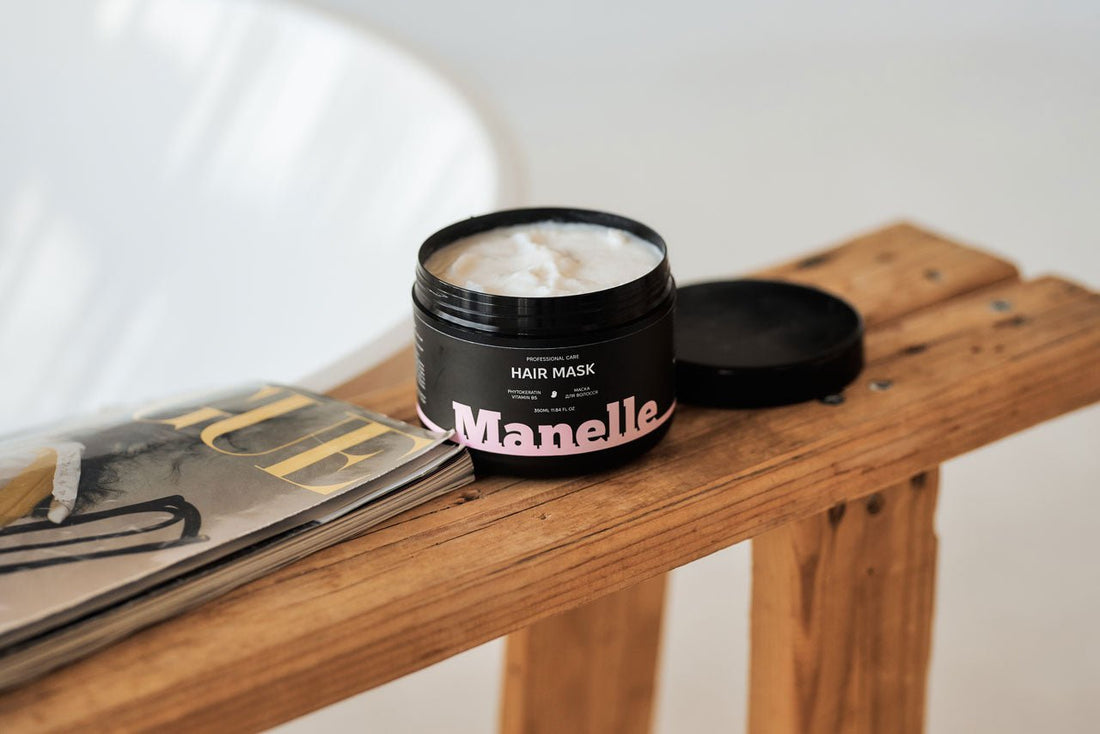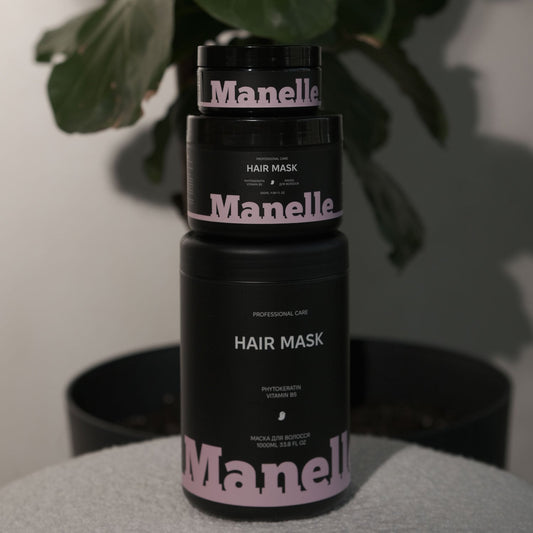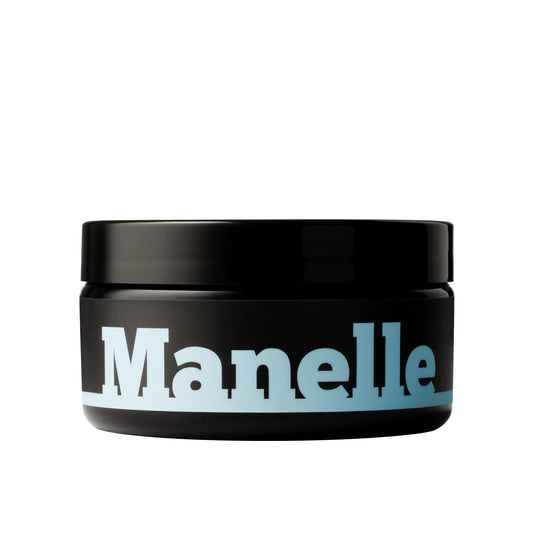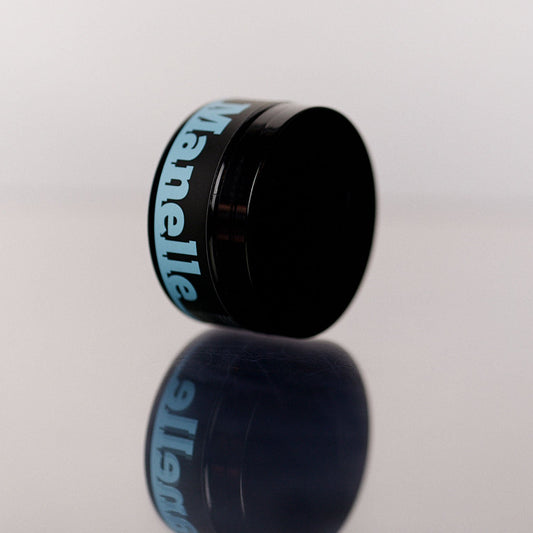
The power of a hair mask: transformation in 20 minutes
In the world of modern hair care, masks have become an indispensable tool for maintaining the health, beauty and vitality of our curls. Choosing the right hair mask can dramatically change the condition of your hair, restoring its shine, softness and strength, so it is important to understand how to choose the product that best suits your needs.
Types of hair masks: find your perfect option
Moisturizing masks are a lifesaver for dry and brittle hair that has lost its natural elasticity and shine. These products work as an intensive therapy, saturating the hair with hyaluronic acid, natural oils and plant extracts. The main components - argan oil, shea butter, aloe vera and glycerin - penetrate the hair structure, restoring the natural moisture balance. Such masks are especially useful after the summer season, when the hair suffers from the sun and sea salt.
Protein hair masks are designed to restore severely damaged hair after chemical treatments - dyeing, bleaching, perming. They contain hydrolyzed wheat, soy or keratin proteins, which fill microcracks in the hair structure and restore its strength. These masks can be compared to building materials for hair - they literally "repair" damaged areas, returning the hair to its natural structure and elasticity.
Nourishing masks are enriched with vitamins, minerals and antioxidants that nourish hair from the inside and protect it from negative external influences. Ginseng, seaweed, caviar and precious oils extracts create a powerful cocktail to restore hair vitality. Purifying masks with clay, activated charcoal or sea salt deeply cleanse the scalp and hair from impurities, styling product residues and excess sebum.

How to choose a mask according to your hair type
For oily hair, masks with sebum-regulating properties and light textures that do not weigh down the roots are ideal. Clay masks with kaolin or bentonite effectively absorb excess oil and cleanse the pores of the scalp. Tea tree extract, rosemary and mint have antiseptic properties and help control the work of the sebaceous glands. It is important to apply such masks only to the length of the hair, avoiding the roots, so as not to stimulate additional sebum production.
Dry and damaged hair needs intensive nourishment and hydration. Masks with a high content of natural oils - coconut, argan, macadamia - penetrate deeply into the hair cuticle, restoring the natural lipid barrier. Ceramides and cholesterol in the masks fill the gaps between the cuticle scales, making the hair smoother and shinier. For very dry hair, masks with shea butter, avocado and aloe vera extract are recommended.
Thin hair requires a special approach - masks should provide volume and density without weighing down the structure. Rice and wheat proteins create an invisible film around each hair, visually increasing its diameter. Hop, nettle and ginseng extracts stimulate blood circulation in the follicles, promoting the growth of stronger hair. Light emulsions and mousses are better than heavy cream textures for thin hair.
Professional VS Homemade Masks: Comparison of Effectiveness
Professional hair masks are developed in laboratories using the latest achievements of trichology and cosmetic chemistry. They contain high concentrations of active ingredients that are not available in the mass segment. Complexes of peptides, plant stem cells, nanoencapsulated oils and synthetic analogues of natural components provide fast and noticeable results after the first application.
Salon masks often have a multi-phase effect - first they cleanse, then nourish, and finally seal the result with a protective film. Professional lines offer a personalized approach, taking into account not only the type of hair, but also its current condition, history of chemical treatments and individual characteristics. The cost of such products is higher, but the concentration of active ingredients allows you to use smaller amounts of product.
Homemade masks made from natural ingredients have their advantages - complete control over the composition, the absence of preservatives and synthetic additives, and cost-effectiveness. Avocados, bananas, eggs, honey, and oils are easily available and safe to use. However, their effectiveness may be lower due to the large size of the molecules of natural ingredients, which cannot always penetrate the deep layers of the hair. The effect time of homemade masks is also usually longer - from 30 minutes to several hours.

Top ingredients to look for when buying a hair mask
Keratin remains one of the most effective ingredients for repairing damaged hair. Hydrolyzed keratin has small molecules that easily penetrate the hair structure, filling cracks and restoring integrity. It is especially useful after chemical treatments and for naturally weak hair. Keratin masks make hair stronger, more elastic and resistant to damage.
Hyaluronic acid in hair care works as a powerful humectant, capable of holding 1000 times more moisture than its own weight. It creates an invisible film around the hair, preventing moisture loss and protecting against external aggressors. Especially effective for dry, bleached and chemically treated hair.
Natural oils bring a variety of benefits depending on the type:
- Argan oil - a universal solution for nourishment and shine
- Coconut oil - deep penetration and protection against protein loss
- Macadamia - fast absorption without a greasy effect
- Jojoba - regulates the work of the sebaceous glands and moisturizes
- Shea - intensive nourishment for very dry hair
Peptides and amino acids are the building blocks of hair that stimulate natural repair and strengthening processes. They are especially effective when combined with proteins and vitamins.
How to use masks correctly for maximum effect
Preparing your hair for a mask is critical to its effectiveness. Hair should be clean and slightly damp - too much water can dilute the mask's active ingredients, and completely dry hair will not allow the product to be evenly distributed. Use a mild, sulfate-free shampoo to avoid overdrying your hair before the nourishing treatment.
The technique of applying the mask is as important as its composition. Distribute the product from mid-lengths to ends, avoiding the roots, unless it is a special mask for the scalp. Use a comb with rare teeth for even distribution and better penetration. Creating heat with a plastic cap and a towel enhances the action of the active ingredients.
The exposure time depends on the type of mask and the condition of the hair - from 5 minutes for express products to 30 minutes for intensive restoration. Do not leave the mask on for longer than the recommended time, as this can lead to oversaturation of the hair with proteins or, conversely, to overdrying. Rinse the mask with cool water to close the cuticle and maintain the result.

Seasonal care: when to change masks
Spring awakening of hair after winter trials requires a special approach to the choice of masks. Winter hats, dry air from heating and lack of vitamins make hair dull and brittle. Detox masks with clay and seaweed help cleanse hair of accumulated impurities, and vitamin complexes with extracts of young plants restore vitality. Masks with nettle extract, birch buds and green tea are especially useful.
Summer requires enhanced protection from UV rays, chlorinated water and sea salt. Protective masks with natural UV filters and antioxidants become indispensable. Moisturizing formulas with aloe vera, cucumber and menthol have a cooling effect and restore water balance. After a beach holiday, intensive restorative masks with keratin and proteins are recommended.
Autumn is a time of intensive nutrition and preparation for the cold. Nourishing masks with natural oils, honey and vitamins help to accumulate resources for the winter period. Autumn hair loss is a natural process, but it can be minimized with the help of strengthening masks with caffeine, nicotinic acid and onion or garlic extracts. Winter care focuses on protection and hydration - rich textures with oils and ceramides create a protective barrier against frost and wind.
Where to buy a hair mask: a practical guide to choosing and purchasing
The choice of where to buy a hair mask for hair restoration after dyeing can significantly affect the effectiveness of the treatment and the overall result. Specialized beauty salons and professional cosmetics stores offer the widest range of restorative masks from leading brands. They have qualified trichologist consultants who can assess the degree of hair damage after dyeing and recommend the optimal remedy. The advantage of such institutions is the opportunity to test the texture of the mask and get personal recommendations on the frequency of use.
Pharmacy chains are becoming an increasingly popular place to purchase treatment masks for severely damaged hair. Pharmacy cosmetics undergo stricter quality checks and often contain higher concentrations of active ingredients. Pharmacists can provide competent advice on combining different recovery products and warn about possible contraindications. It is especially useful to contact pharmacies when choosing keratin masks or protein complexes for critically damaged hair.
Online platforms and official brand websites provide access to exclusive formulas and professional lines that are not always available in regular stores. Many manufacturers offer special post-coloring recovery kits that include several products with synergistic effects. When shopping online, it is important to pay attention to reviews from users with similar hair problems and choose trusted sellers with a guarantee of product authenticity. Official websites often offer consultations with brand experts and detailed instructions for use.
Hair masks are your investment in beauty and health
A properly chosen hair mask becomes a powerful tool for transformation, capable of dramatically improving the condition of even the most damaged hair. The modern market offers a multitude of options - from affordable drugstore products to luxury professional formulas, and everyone can find the optimal solution according to their needs and budget. The key to success lies in understanding the characteristics of their hair type and consistently using quality products.
Investing in good hair masks will pay off not only by improving the appearance, but also by improving the long-term health of your hair and scalp. Regular use of the right products can prevent many problems - from dryness and brittleness to hair loss and loss of shine. Proper care allows you to resort to expensive salon treatments less often and maintain the effect with home remedies.
Modern technologies and innovative ingredients make home care increasingly effective and convenient. By choosing hair masks from trusted manufacturers and following the rules of their use, you provide your hair with professional care in the comfort of your own home. Remember that healthy hair is not a luxury, but the result of constant attention and proper care, which is available to anyone who is willing to invest time and effort in their own beauty.


















